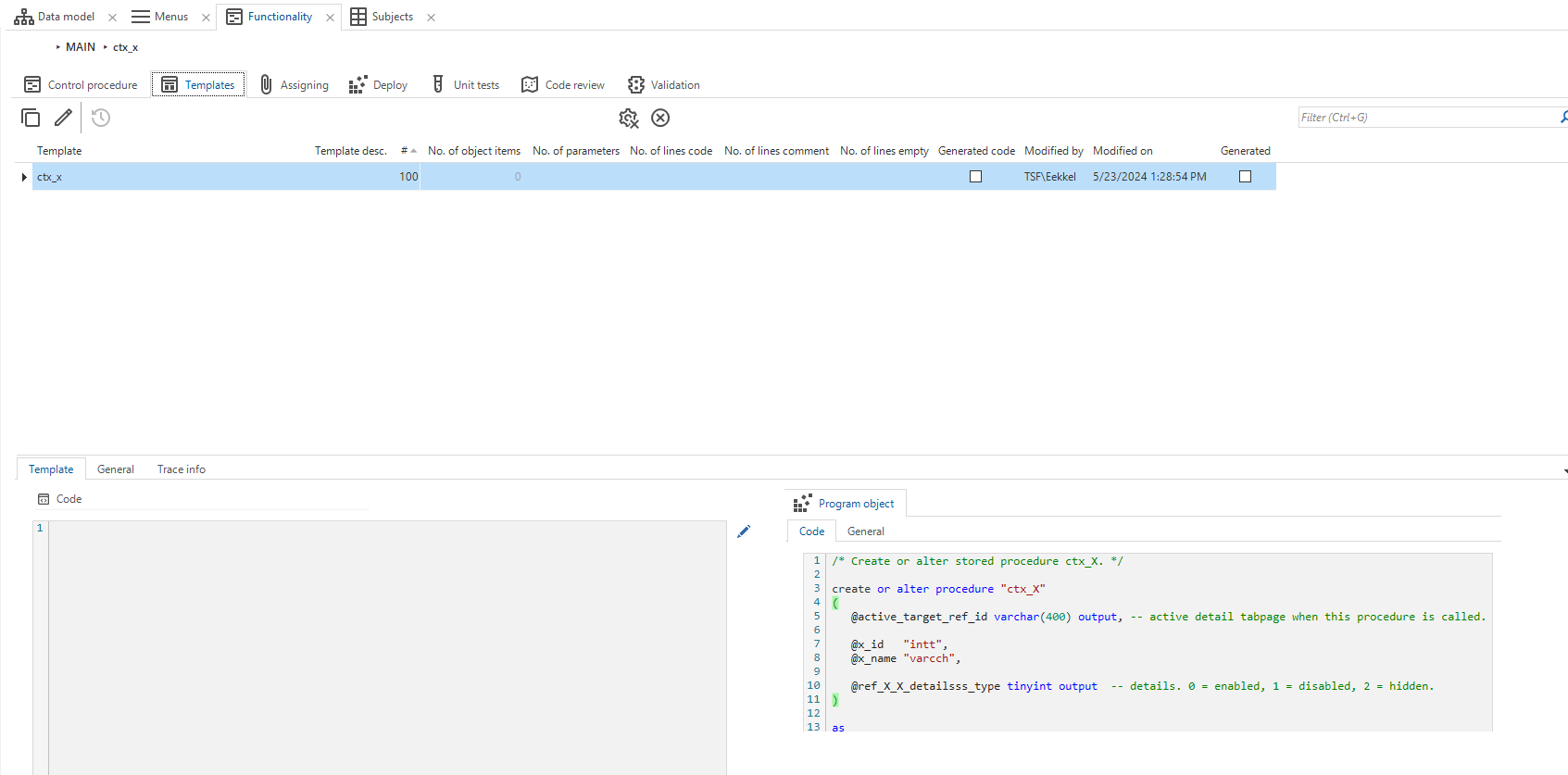When creating a new control procedure and template for a program object, such as a default or a layout, these are the general steps:
- create control proc
- assign placeholder template to prog_object_item
- which creates a template automatically
- generate the prog_object
- copy the parameters of the program object
- paste it in the template.
- Write your code and delete the pasted signature.
These are a lot of steps, which imho can be done in one flow after creating your control proc and assignment. It will save a lot of clicks and screen switching.









